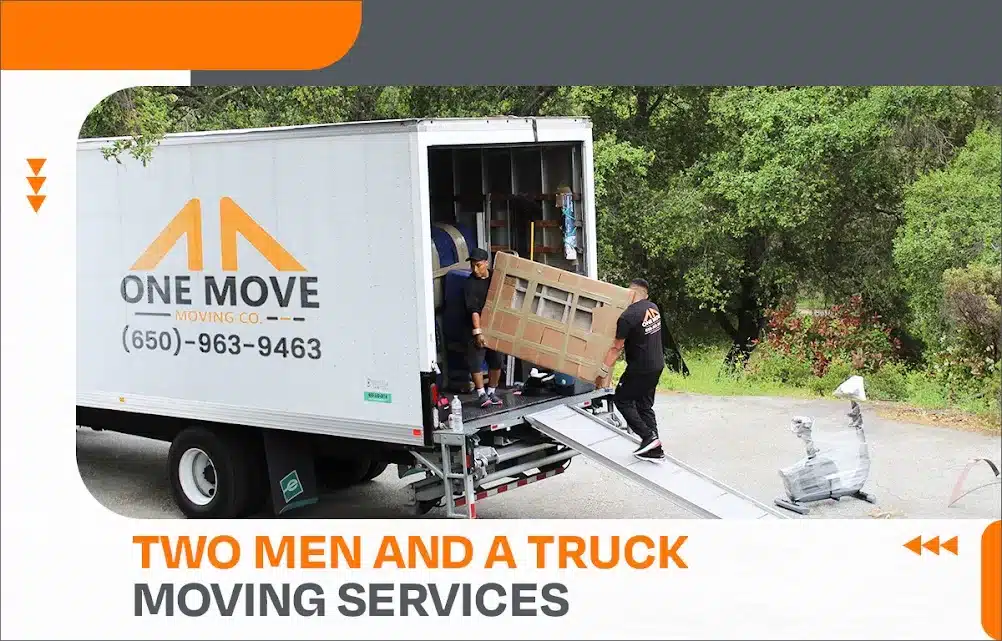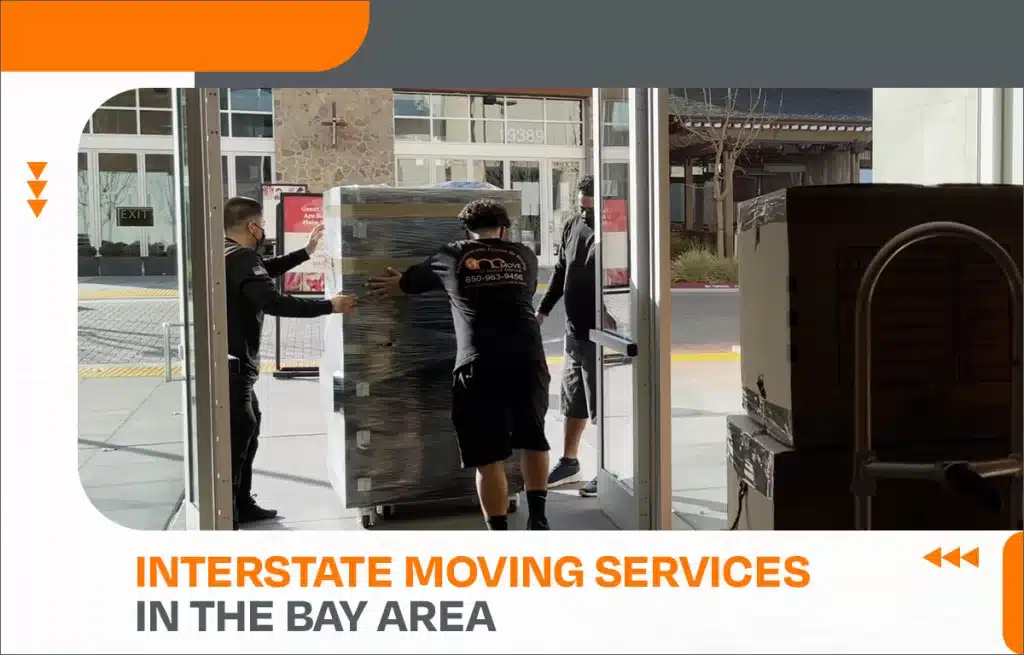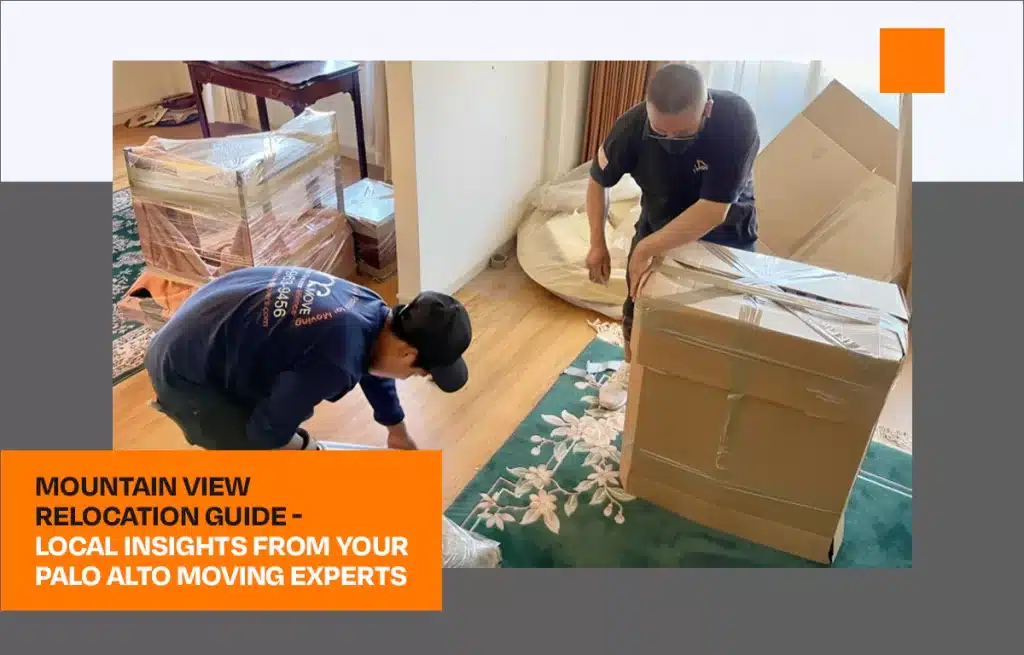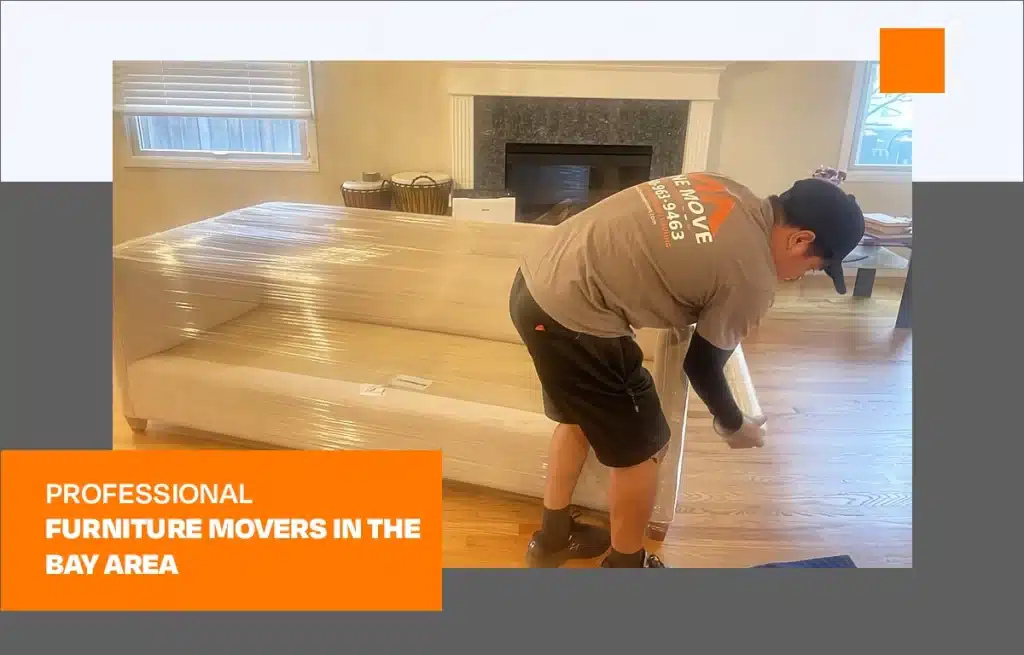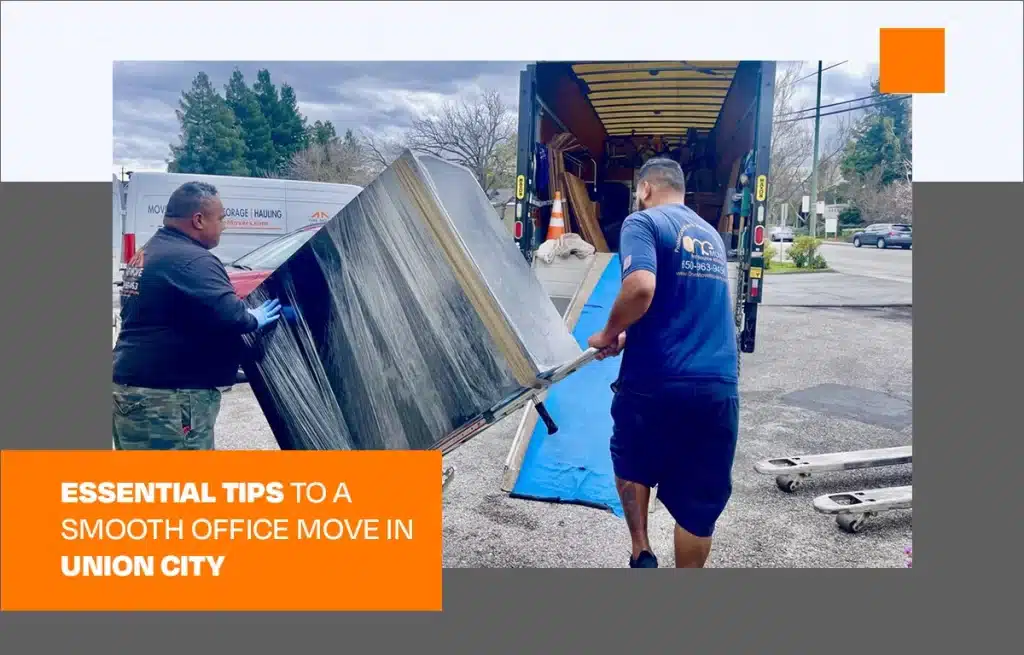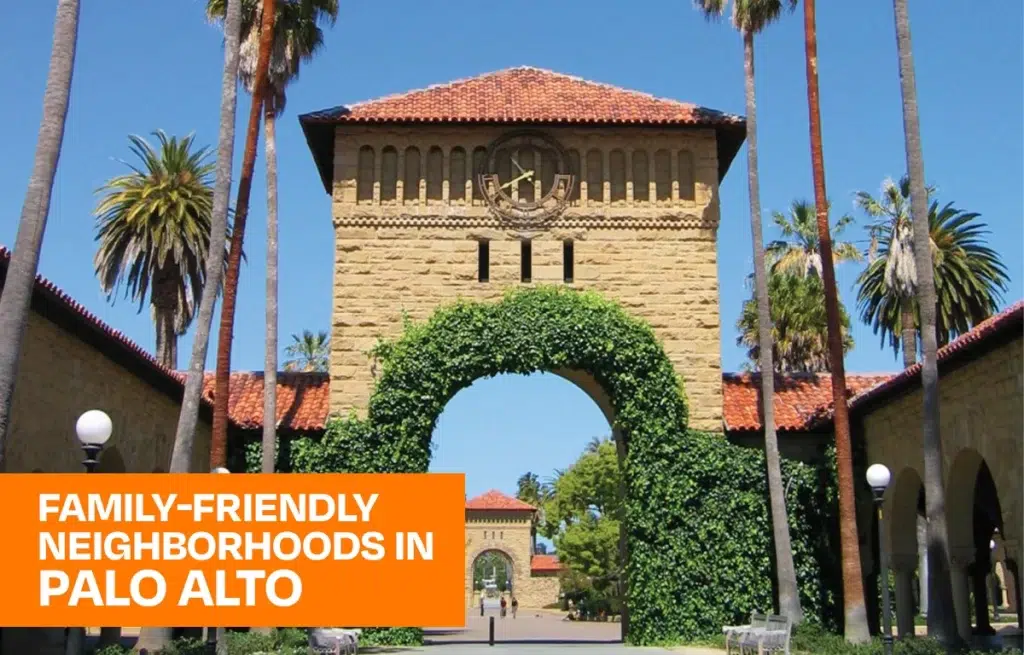Two Men and a Truck Moving Services: Complete Guide to Small Team Moving Solutions in the Bay Area
Understanding Two Men and a Truck Moving: What It Is and Isn’t The term “two men and a truck” has evolved from a simple description to a moving industry category representing streamlined, efficient moving services with small, focused teams. As experienced movers serving Palo Alto, Mountain View, and surrounding Bay Area communities, One Move Movers provides specialized small team moving solutions tailored to the unique needs of Silicon Valley residents. What exactly does “two men and a truck” mean in today’s moving industry? Basic moving services with smaller crews (typically 2-3 movers) Streamlined operations focused on efficiency and value Simplified pricing structures compared to large moving companies Direct service without the overhead of larger operations Personalized attention from consistent teams Ideal for apartments, condos, and smaller homes Customizable service levels from basic to comprehensive This guide explores everything Bay Area residents need to know about small team moving services, comparing options, understanding pricing, and ensuring quality service for your Palo Alto, Mountain View, or Silicon Valley relocation. When Two Men and a Truck Services Make Sense Ideal Moving Scenarios for Small Teams What types of moves are perfect for two-person moving crews? Small team moving services excel in specific situations: Perfect for Palo Alto Apartments Why are small teams ideal for Palo Alto apartment moves? Navigate limited parking in downtown and University areas Maneuver efficiently in older buildings with space constraints Provide personalized service for tech professionals’ valuable equipment Handle historic building considerations with careful attention Offer flexible scheduling for busy Silicon Valley schedules Navigate multi-unit building regulations efficiently Maintain lower overhead for better value in high-cost area Excellent for Mountain View Condos What makes two-person teams effective for Mountain View properties? Perfect sizing for tech corridor condominiums and town homes Navigate tech campus-adjacent properties with parking challenges Handle specialized technology equipment with appropriate care Work efficiently within HOA moving time restrictions Provide personalized attention to high-value properties Offer streamlined service for busy technology professionals Navigate growing density with appropriate vehicle sizing Ideal for Small Moves in Neighboring Communities Can small teams handle moves effectively? Perfect for smaller Los Altos, Menlo Park, and Sunnyvale moves Efficient for focused moves without excess resources Personalized service throughout the entire moving process Continuous attention from the same team members Direct communication without management layers Flexible approaches for unique property considerations Cost-effective for small-sized relocations When to Consider Larger Teams When might two-person crews be insufficient? Recognize limitations for proper planning: 1. Larger Home Considerations 2+ bedroom homes often require additional personnel Extensive furniture collections need more hands Multiple heavy items benefit from larger crews Two-story homes with significant staircase moving Properties with complex access challenges Moves with tight completion deadlines Extensive specialty item collections 2. Timeline Constraints Extremely limited moving windows Same-day completion requirements for larger homes Property vacancy deadlines requiring rapid execution Coordinated moves with multiple service providers Commercial property limitations on moving hours Rental overlap minimization efforts Specialized schedule requirements 3. Specialty Situations Piano or specialized equipment moving Extensive artwork or collection relocation Extremely valuable furnishings requiring extra hands Antique or historically significant furniture Commercial equipment with technical requirements Multiple oversized items in one household Extensive packing and moving combinations Cost Factors for Two Men and a Truck Services Understanding Pricing Structures How do small-team moving services typically charge? Pricing models in the Bay Area typically include: Hourly Rate Structures Two-person teams: $145-$165 per hour Three-person teams: $185-$225 per hour Minimum hour requirements (typically 3 hours) Travel time considerations (usually included within service area) Overtime rates for extended service periods Weekend/holiday premium considerations Potential fuel charges for more distant service areas Flat Rate Options Studio apartments: $400-$600 for local moves One-bedroom homes: $400-$900 for local moves Partial or specialty moves: Custom quotes based on inventory Long-distance structure differs significantly Insurance and valuation options additional Packing services typically separate Additional Cost Factors Packing material requirements Stair and elevator considerations Long carry distances from parking Specialty item handling fees Storage integration needs Assembly/disassembly requirements Packing and unpacking service addition Comparing Costs Across Moving Options How do two men and a truck services compare to alternatives? Cost comparison helps determine the right approach: Moving Option Pros Cons Best For Two Men Teams Personalized, efficient, flexible Limited capacity, variable quality Small-medium moves, value-conscious Full-Service Companies Comprehensive, established systems Higher costs, less personal Larger homes, premium service preference DIY Rental Truck Lowest direct cost, complete control Hidden costs, physical demands, time investment Extremely budget-conscious, for experienced Moving Containers Flexible timing, moderate cost Loading/unloading effort, space limitations Flexible schedule needs, combined shipping Hybrid Approaches Customized to specific needs Coordination complexity, multiple vendors Specific requirements, partial professional needs Avoiding Hidden Costs What unexpected expenses should I watch for with small moving teams? Common surprises include: ✓ Minimum Hours: Most companies require 3-hour minimums even for small jobs ✓ Travel Time: Some companies include travel time in billable hours ✓ Material Costs: Boxes and supplies often additional unless specified ✓ Stair and Elevator Fees: Multi-floor properties may incur additional charges ✓ Long Carry Fees: Distance from truck parking to door may add costs ✓ Heavy Item Surcharges: Pianos, safes, and similar items often have special rates ✓ Insurance Limitations: Basic coverage may be insufficient for valuable items ✓ Cancellation Policies: Schedule changes may incur fees ✓ Credit Card Processing Fees: Some companies add surcharges for card payments ✓ Fuel Surcharges: Particularly for service areas farther from company base How to Evaluate Two Men and a Truck Moving Companies Essential Qualifications and Verification What should I verify before hiring a small moving team? Critical credentials for quality assurance: 1.Licensing and Insurance Verification California Public Utilities Commission (CPUC) license Active business license in service cities General liability insurance Worker’s compensation coverage Cargo coverage for belongings Commercial vehicle insurance Verification methods for each requirement 2.Reputation Research Online review patterns across multiple platforms Better Business Bureau status and history Complaint records with CPUC Local business association membership Community presence and history Specific reviews mentioning smaller team moves References for similar moves to yours 3.Operational

